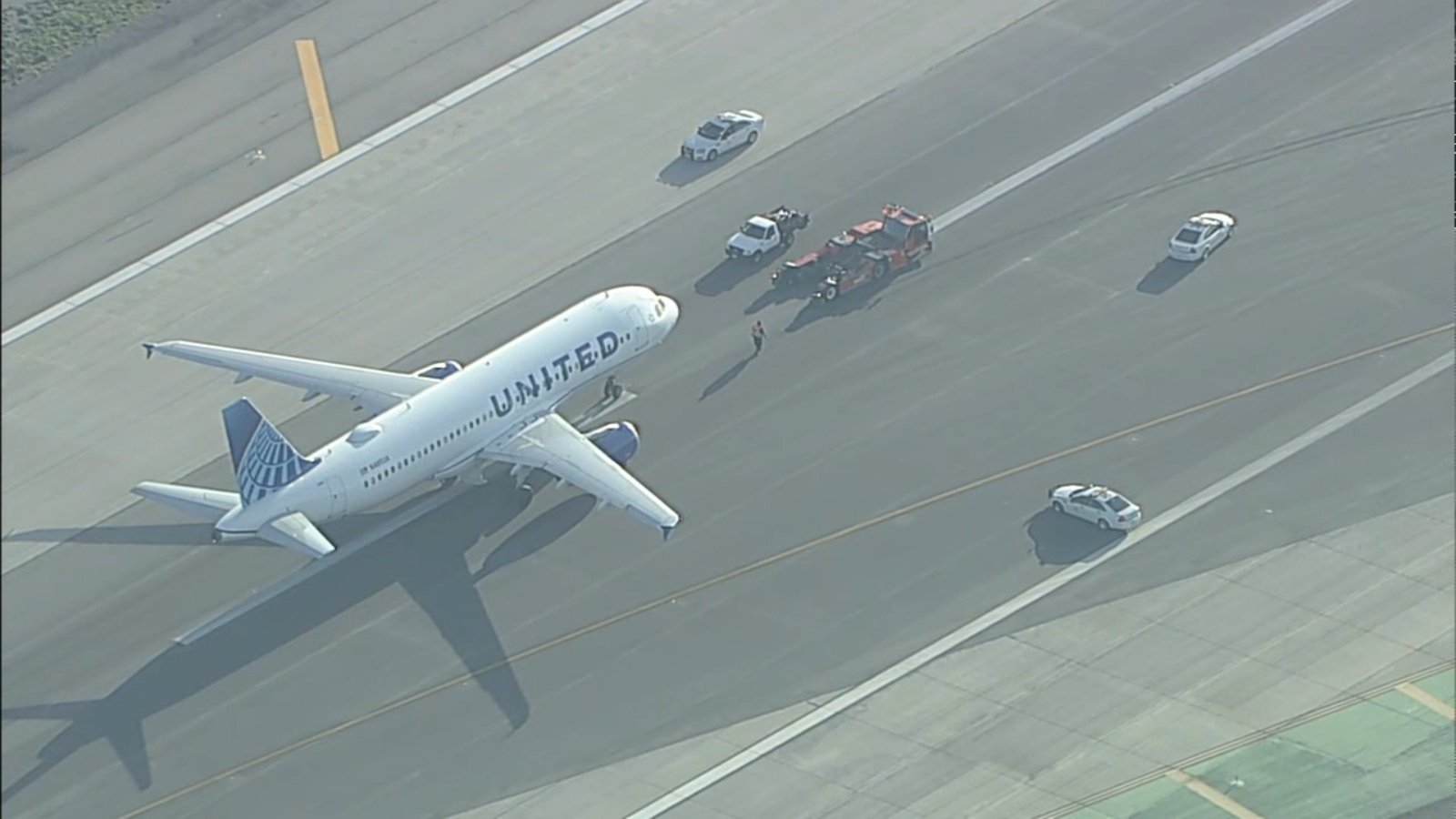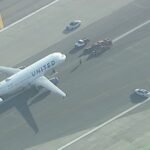On what was supposed to be an ordinary journey from Denver to Boston, United Airlines Flight UA770 Emergency Diversion turned into a dramatic but professionally handled event that highlighted the resilience of aviation teams and passengers alike. The unexpected turn of events was triggered by a pressurization issue that forced the aircraft to make an unscheduled landing in Chicago. Here’s a closer look at what unfolded.
A Flight That Began Like Any Other
United Airlines Flight UA770 departed on its way to Denver International Airport on a quiet morning. The flight carried an impressive 168 passengers as well as 6 crew members aboard. Given the favorable weather conditions and clean and well-maintained Boeing 747-900 aircraft and expectations set, the plane was expected to be the usual flight. The majority of passengers sat back and relaxed during the journey, and in-flight service was running as normal.
Business travelers opened their laptops, families settled in for the three-and-a-half-hour flight, and cabin crew began distributing refreshments. All seemed to go in the right direction.
The Moment Everything Changed
Around an hour into the flight, the plane began to show signs that there was something wrong. People began feeling uncomfortable, while some were also noticing their ears popping more than normal. Some felt dizzy. After that, they saw the abrupt deployment of oxygen masks, a clear indication that cabin pressure had decreased.
When this happens it is when training becomes the main focus. By the normal procedures for pressurization problems and emergencies, the crew of the plane initiated the descent in a controlled manner. Captains quickly issued an announcement, requesting passengers to stay relaxed and wear the oxygen masks supplied.
The oxygen masks fell in a seamless manner. Air attendants swiftly moved through the aisles, assisting the passengers to put on their masks and giving them a calming and professional manner. The plane began to descend quickly but slowly from its maximum elevation of 35,000 feet to a lower altitude at which breathable air is readily present.
The United Airlines Flight UA770 Emergency Diversion Unfolds
With safety as the top priority, the crew coordinated with air traffic control and decided to reroute to Chicago O’Hare International Airport. The United Airlines Flight UA770 Emergency Diversion was handled swiftly and precisely. Air traffic controllers cleared the flight path to O’Hare, one of the most capable airports in the country for emergency responses.
In the cockpit, Captain Thomas Gleeson and First Officer Natalie Park executed their training flawlessly. While the captain focused on piloting the aircraft safely, the first officer communicated with controllers and monitored instruments.
Flight UA770 made a safe landing at O’Hare around 11:13 am local time. Emergency vehicles had already landed, waiting on the runway; however, they were not needed. The incident did not cause any injuries, and people who were on the runway were evacuated without incident.
Ground Response and Airline Support
Following the landing, passengers were escorted into the terminal where medical teams stood by to conduct precautionary checks. Most passengers were unharmed and only mildly shaken. United Airlines personnel were quick to offer support, including food vouchers, hotel accommodations for those needing overnight stays, and rebookings for connecting flights.
A maintenance inspection was launched immediately. Initial findings pointed to a malfunctioning cabin pressure controller, a component responsible for regulating pressure inside the aircraft’s cabin. Although it passed its last inspection two weeks earlier, such mechanical issues can develop unexpectedly.
Passenger Reactions
Despite the scare, passengers overwhelmingly praised the calm and efficiency of the airline staff.
Maria Gonzales, seated in row 12, later shared, “I was terrified when the masks came down. But the crew kept their cool, and that helped me stay calm too. I’m so grateful to them.”
Others echoed similar sentiments on social media, with photos of oxygen masks and midair updates shared widely using hashtags like #UA770 and #UnitedEmergency. Many emphasized how informed and reassured they felt throughout the ordeal thanks to clear communication from the cockpit and cabin crew.
Understanding What Went Wrong
The airplane involved in the crash, a Boeing 737-900, was 6 years old, and it was in good condition with a long history of maintenance. Pressure problems are common; however, they are not uncommon. Experts think that the cabin pressure regulator had failed, leading to the emergency down.
Fortunately, commercial planes are built with multiple safety mechanisms. The oxygen masks worked exactly as they should, and the flight crew executed every step of the emergency protocol with precision. The United Airlines Flight UA770 Emergency Diversion was not just a necessity but a textbook example of aviation safety systems working as designed.
The Bigger Picture: Aviation Safety in 2025
This event highlighted the necessity of ongoing training and the advancement of technology in modern aviation. Pilots receive rigorous training in simulators in similar situations. The cabin crew practice the emergency procedures frequently, such as decompression of cabins and mid-air emergency control.
The aviation community, including the FAA and major airlines like United, use events like the United Airlines Flight UA770 Emergency Diversion as case studies. They analyze every detail to refine safety protocols, update training modules, and enhance equipment standards.
Air travel remains one of the safest forms of transportation. Incidents are rare, but when they happen, they reinforce the value of preparedness, professionalism, and clear communication.
Why This Diversion Stood Out
Not all emergency landings make headlines. What made the United Airlines Flight UA770 Emergency Diversion so notable was how well it was managed. The absence of injuries, the fast response time, and the professionalism displayed at every level set this case apart.
It was also a reminder for travelers to take safety briefings seriously. Knowing how to use an oxygen mask and understanding the cabin crew’s instructions can make a significant difference during an emergency.
Moving Forward
In the days following the event, United Airlines issued a public statement thanking the crew and passengers for their cooperation. The airline emphasized its commitment to investigating the incident thoroughly and updating its maintenance protocols where needed.
Flight UA770 resumed regular service on a different aircraft later in the week. Many passengers continued their travel without further issues, some even rebooking with United in confidence after seeing firsthand how the airline handles a crisis.
Conclusion
The United Airlines Flight UA770 Emergency Diversion wasn’t just a mid-air scare—it was a story of preparedness, professionalism, and the enduring trust in aviation safety systems. What could have been a traumatic experience became a powerful example of how emergencies can be managed when every part of the system—from aircraft mechanics to human training—functions effectively.
Thanks to rapid decision-making, open communication, and strong teamwork, everyone aboard UA770 landed safely. For many, it reinforced faith in flying—and reminded all travelers of the importance of staying alert, informed, and calm.
FAQs
1. Why was United Airlines Flight UA770 diverted?
Due to a suspected pressurization failure, the flight was rerouted to the nearest major airport as a precaution.
2. Did anyone get hurt during the diversion?
No injuries were reported. All passengers were safe and received medical evaluations upon landing.
3. Where did the plane land?
Chicago O’Hare International Airport was the destination of the emergency diversion.
4. What type of plane was involved in United Airlines Flight UA770 Emergency Diversion?
A Boeing 737-900, a common and reliable aircraft in commercial aviation.
5. Is it safe to fly after such incidents?
Yes. Incidents like the United Airlines Flight UA770 Emergency Diversion are rare and handled with strict protocols to ensure safety.












